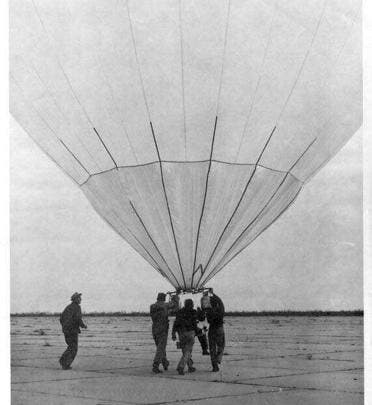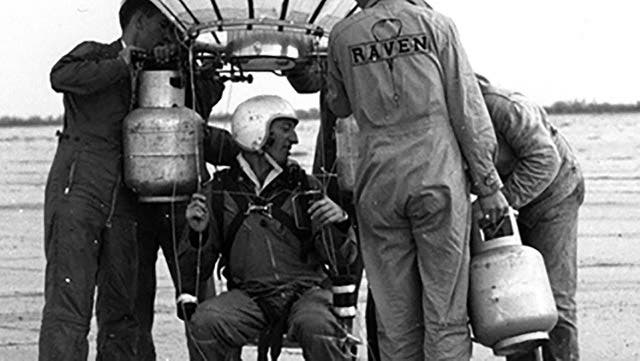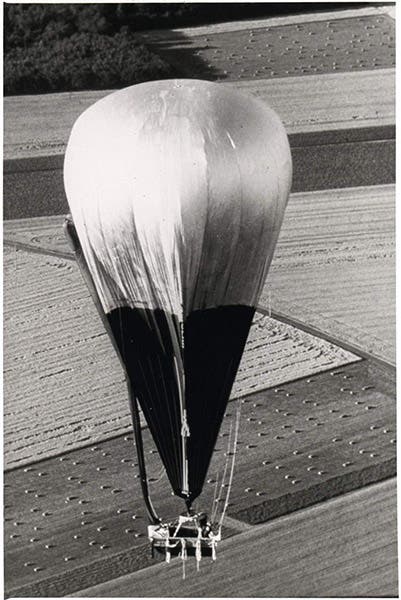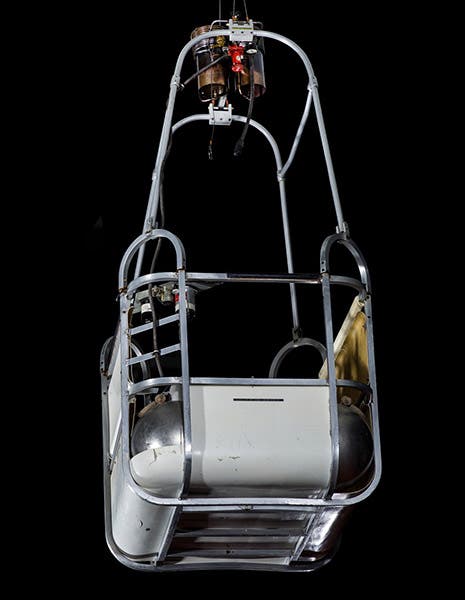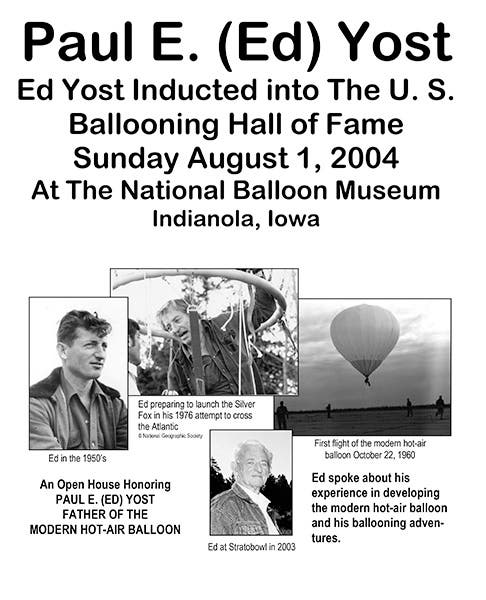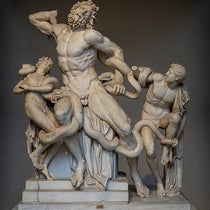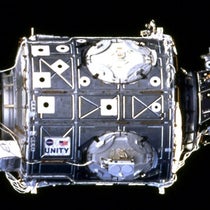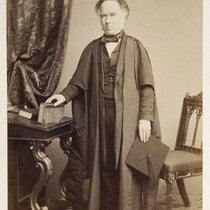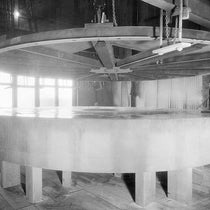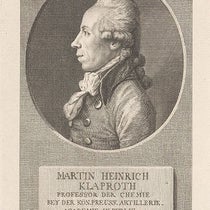Scientist of the Day - Ed Yost
Paul E. (Ed) Yost, an American engineer, inventor, and aviator, was born in Bristow, Iowa on June 30, 1919. Yost, who was always called Ed, was trained as an aerospace engineer by Boeing, and, after the war, he went to work for General Mills, which, in addition to finding ways to produce puffed cereals, had an aerospace division in the 1950s that produced high-altitude balloons for the U.S. Navy, which were used for cold-war espionage. All such balloons at that time were lofted by either hydrogen or helium, since no one had found a way to safely keep the air hot in a hot-air balloon.
Yost was interested in reviving the hot-air balloon, which after all was the type of balloon used by the Montgolfier brothers on the original manned balloon flights of 1783. He developed special plastic films to use for envelopes, and kerosene "pots" that could be used to reheat the air while aloft and keep it aloft. Yost and three other renegades left General Mills in 1956 and formed their own balloon company, Raven Industries, which they headquartered in Sioux Falls, South Dakota. They soon had their own contracts with the Navy to develop manned hot-air balloons.
The key development in reviving the hot-air balloon was probably Yost's invention of the propane "burner", which could easily produce a controllable burst of heat to maintain buoyancy. Using such a burner, and special heat- and leak-proof lightweight synthetic fabric, Yost, on Oct. 22, 1960, made the first untethered human hot-air balloon flight of modern times. The balloon was 40 feet in diameter, and Yost flew it for 95 minutes (first image).
Although it was not their intention, Yost and Raven Industries, with that flight of 1960, founded modern recreational ballooning. They produced lightweight aluminum-tube gondolas, affordable envelopes, and safe burners, and they found a market among civilians, those who wanted to fly but didn't want to learn to fly an airplane. Hot-air ballooning got a publicity boost when Yost and Don Picard (nephew of noted balloonist Auguste Piccard) flew a hot-air balloon, the Channel Champ, across the English Channel in April of 1963.
Yost's most daring balloon venture was his attempt to fly across the Atlantic in 1976 in a hot-air balloon of his own design and construction, the Silver Fox, which had a gondola that was also a boat. This turned out to be good planning, as the balloon, launched from Maine, came down in the Atlantic some 700 miles southwest of Portugal. Yost built two more trans-Atlantic balloons, and the second one, Double Eagle II, successfully flew from Presque Isle, Maine, to Paris in August of 1978, piloted by Ben Abruzzo with two others (third image).
There are two national museums devoted to hot-air ballooning. The first, the National Balloon Museum, is in Indianola, Iowa, just south of Des Moines, where you can see the gondola from Yost's Channel Champ of 1963. The Museum established a Ballooning Hall of Fame in 2004. There was just one inductee that first year: Ed Yost, the father of the modern hot-air balloon (fifth image). However, before you venture to the Museum, be aware that it closed in 2024 due to a serious fire and, according to its website, has not yet reopened. I do not know what the problem is.
Yost spent the last half of his life in Vadito, New Mexico (the other U.S. ballooning museum is in Albuquerque), but it appears he was always an Iowan at heart, and when he died on May 27, 2007, his remains were returned for burial to Allison, the county seat of Butler County, Iowa, and not far from his birthplace near Bristow (sixth image). Neither location is anywhere near Indianola.
Wikipedia, in its articles on towns and cities, usually has a section on "Notable People," in which it lists residents who went on to become famous. I was amused to discover that "Bristow, Iowa" has a section called "Notable Person," in which Ed Yost is the sole occupant.
William B. Ashworth, Jr., Consultant for the History of Science, Linda Hall Library and Associate Professor emeritus, Department of History, University of Missouri-Kansas City. Comments or corrections are welcome; please direct to ashworthw@umkc.edu.

